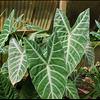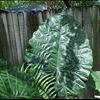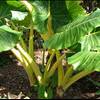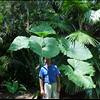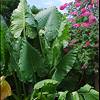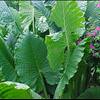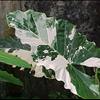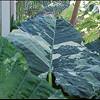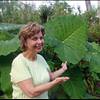This plant may be available to buy
Click the banana to see

|
Elephant Ear click pics to enlarge |
|
Zone 10 The names Alocasia and Colocasia are confusing in that an easy distinction between the families is not seen. To refer to these types of plants, the Latin Xanthosoma is also used. The reasoning is some DNA detail only technical plant experts are able to explain. There are at least 70 known species of alocasia click pic to enlarge This very large Elephant Ear is seen throughout South Florida, Native to Java and Malaysia, people there use alocasia (Esculenta, Taro) as important sources of starch, such as poi in the Hawaiian food tradition click pics to enlarge Each leaf of alocasia and colocasia grow from soft stems. The leaves are variable in size but can be 3 feet wide and 4 feet long in the plant pictured above The variegated versions of Alocasia are crisp and beautiful, like these which we think really "pop" click pic to enlarge click pic to enlarge Alocasias develop hooded white spathes. resembling Spathiphyllum, but much larger in this case, up to 6-7 inches tall and very tropical in impression Related to aglonema and dieffenbachia, these plants may be a tuberous or rhizomatous perennials. All have bold leaves held tall on fleshy long soft 'wet' stems Xanthosoma sagittifolium click pics to enlarge Growth is variable by species but many are large plants, sprawling in habit and form clumps of growth from the soil line. Some will enjoy full sun, but most want shifting shade. Because the stems and leaves are very fragile, perfect wind protection is a must. They generally like a damp, cool, protected shaded home Planted directly in the soil or in a pot, use a nutritious organic soil mix with good drainage. If your selected location is correct, little ongoing care is required. Fungus is the only possible concern Plants named Alocasia, Colocasia or Xanthosoma locally seen in South Florida include:
|
